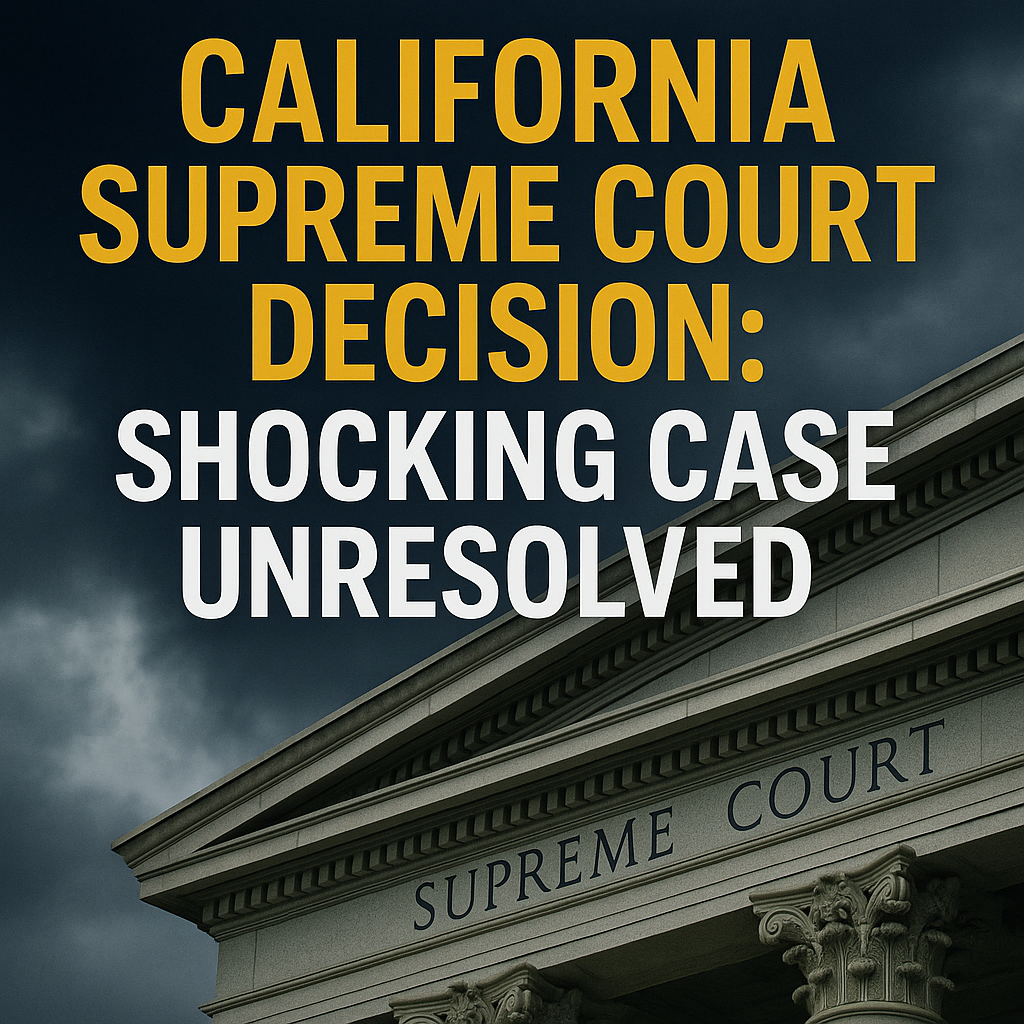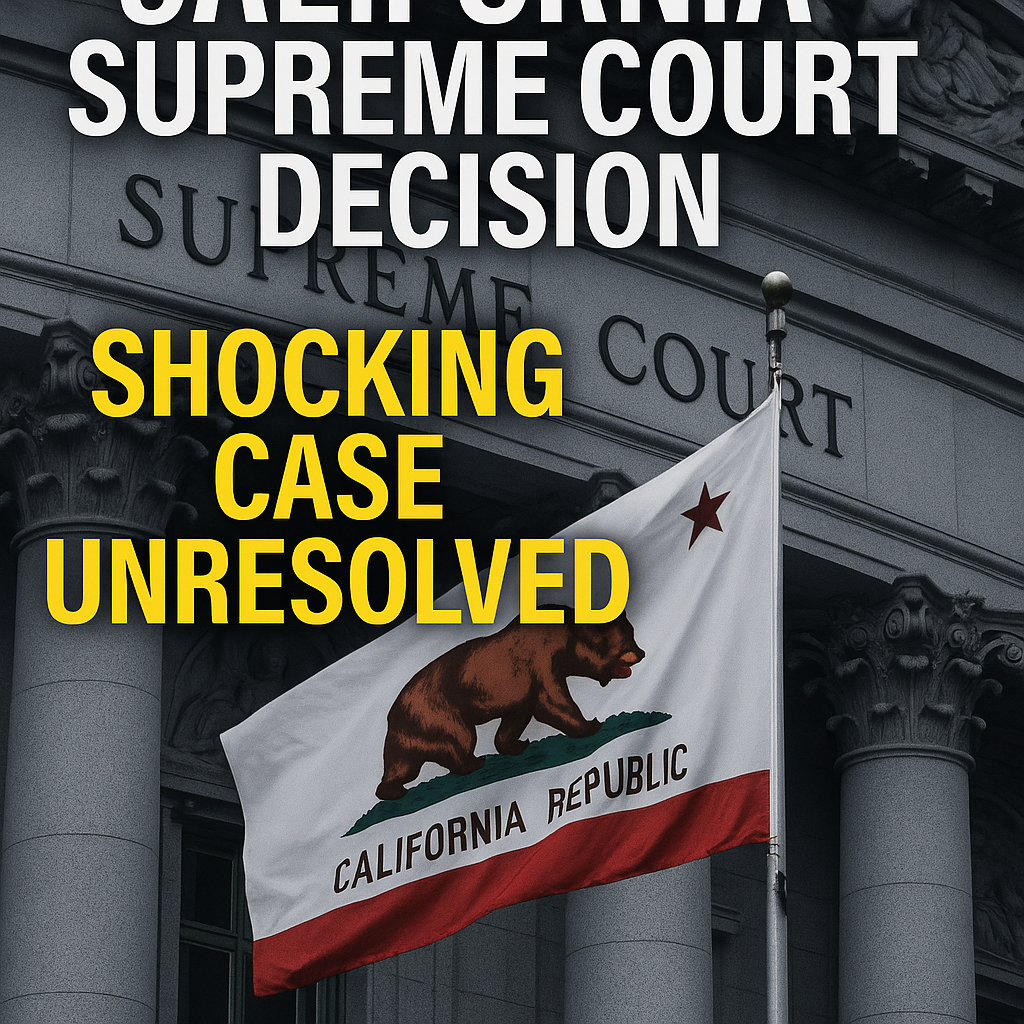California Supreme Court Decision: Shocking Case Unresolved
California Supreme Court Decision: Shocking Case Unresolved
The California Supreme Court decision regarding the 2015 murder of a Whittier teen has sparked renewed debate and concern, as they have opted not to hear a case involving three individuals convicted in the tragic incident. This decision leaves many questions unanswered, highlighting the complexity of the judicial system and the often difficult path to justice.
Context of the Case

In 2015, the murder of 15-year-old Angellyh Yambo shocked the Whittier community. The investigation led to the convictions of three individuals, identified as members of a gang believed to be linked to the circumstances surrounding Yambo’s death. Over the years, the case has become emblematic of broader issues concerning gang violence, judicial consistency, and the challenges inherent in the criminal justice system.
Reasons for the Supreme Court’s Decision
The recent decision by the California Supreme Court not to hear the appeals has drawn mixed reactions from various stakeholders. Some legal experts suggest that the court’s inaction reflects a broader reluctance to intervene in cases where lower courts have already made definitive rulings. According to sources, many feel that the decision sends a message about the finality of jury verdicts and reinforces the notion that appeals may not always yield a reconsideration of the evidence.
Conversely, advocates for the defendants argue that not granting a hearing constitutes a failure in the judicial process. They point out that the lack of a thorough examination of the evidence could lead to wrongful convictions or unchecked biases in the judicial system. This concern extends to broader discussions about fairness and equity in legal proceedings, particularly regarding cases involving marginalized communities.
Public Reaction and Community Impact
The California Supreme Court’s decision has reverberated beyond the legal realm, igniting public discourse. Local residents, activists, and families affected by violence have expressed disappointment and fear that unresolved cases like this one may deter justice seekers from coming forward. Community members have voiced concerns over whether the judicial system adequately serves their interests and whether it reflects the complexities of real-life situations.
Advocates for victims of crime, meanwhile, have emphasized the importance of closure—not just for families like that of Angellyh Yambo, but for communities at large. They argue for greater transparency in the legal process, as well as reforms aimed at ensuring accountability, particularly around cases of gang violence. According to reports, the emotional toll these unresolved cases take on families and neighborhoods is profound, perpetuating a cycle of grief and uncertainty.
Diverging Opinions on the Justice System
The contrasting views surrounding the California Supreme Court’s decision shine a light on larger societal issues. On one side, supporters of the ruling argue that the judiciary must maintain its distance to preserve the integrity of legal proceedings and prevent overreach. Others counter that the system should actively scrutinize its own processes, especially in cases involving serious criminal accusations.
Some legal scholars underline the importance of revisiting long-standing judicial practices to ensure that justice is served adequately. There’s a growing call for reforms aimed at improving the transparency and reliability of the judicial system. Steps could include more facilitated access to legal representation and community engagement in the judicial process, especially in cases marked by considerable public interest.
Conclusion: Seeking Clarity Amidst Uncertainty
The decision by the California Supreme Court not to hear the appeals in the Whittier teen’s murder case illuminates a complex interplay of justice, community impact, and legal processes. While some viewpoint extoll that the court’s decisions should reflect the finality upheld by jury trials, others raise valid concerns about the implications of leaving unresolved cases within communities grappling with trauma.
As the community continues to process this decision, advocacy for judicial reform and the acknowledgment of societal context remain pressing needs. While individual cases may conclude, the quest for justice—both for victims and the wrongly accused—remains an ongoing dialogue that reflects society’s values and its commitment to fairness and equality under the law. The lack of clear resolution in this case serves as a critical reminder that the quest for justice can often be far from straightforward.








